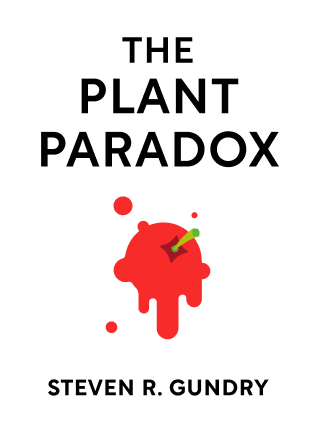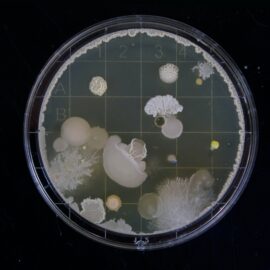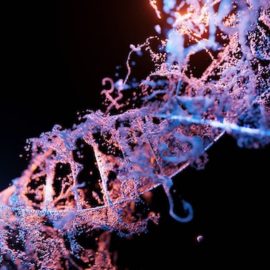

This article is an excerpt from the Shortform summary of "The Plant Paradox" by Steven R. Gundry. Shortform has the world's best summaries of books you should be reading.
Like this article? Sign up for a free trial here .
What is an endocrine disruptor? What do endocrine disruptors do? How can you tell the difference between what is an endocrine disruptor and what isn’t?
An endocrine disruptor is something that imitates the effects of a hormone. Also known as a hormone disruptor, it can cause many problems.
Read more to find out what is an endocrine disruptor, what do endocrine disruptors do, and why it’s important.
What Is an Endocrine Disruptor?
Endocrine disruptors—also called hormone disruptors—mimic hormones (mostly estrogen), causing weight gain, early puberty, and a host of other health issues. In terms of specific chemicals, what is an endocrine disruptor? Endocrine disruptors include:
- Butyl hydroxytoluene (BHT) is a preservative used in processed foods (anything with a shelf life that’s whole grain).
- tert-Butylhydroquinone (tBHQ) is used in processed foods. tBHQ can actually prompt an allergic response to wheat, milk, eggs, nuts, shellfish, and other foods; the additive may be partly to blame for the rise in food allergies.
- Bisphenol A (BPA) is used in plaster water bottles, plastic lining in canned goods, and even baby teething rings.
- Methylparaben is used in multi-use drug containers (e.g. a bottle of novocaine). Methylparaben can cause an allergic reaction that is often mistaken for an allergy to the drug.
- Parabens are used in sunscreen and cosmetics.
- Triclosan is used in hand sanitizers, soaps, deodorants, toothpaste, and other personal care products. Triclosan alters your holobiome, killing off many important microbes, promoting obesity, and even stimulating the growth of precancerous cells.
In addition to the products above, there are endocrine disruptors in:
- Cash register receipts
- Insect repellants
- Hair sprays
- Lubricants
- Mouthwash
- Toys
What do endocrine disruptors do? They can cause the following problems:
- Metabolic diseases, including obesity and diabetes
- Reproductive issues (females and males)
- Hormone-sensitive cancers in women (e.g. breast and ovarian cancer)
- Prostate issues
- Thyroid issues
- Impaired brain and neuroendocrine system development
- Vitamin D deficiency, contributing to obesity and osteoporosis
Avoiding Endocrine Disruptors
Endocrine disruptors can be hard to avoid because they’re nearly everywhere, but there are alternative options. If you want to know what is an endocrine disruptor alternative, see the list below.
- Instead of Teflon and other nonstick cookware, use ceramic cookware or items that are PTFE- and PFOA-free.
- Instead of plastic containers with BPA, use glass or stainless steel containers.
- Instead of plastic bags and plastic wrap, use reusable cloth bags or wax paper.
- Instead of sunscreens with parabens, use sunscreen with titanium oxide.
- Instead of hand sanitizers with triclosan, use soap and hot water.
The Hidden Chemicals in Your Food
Besides WGA, there are other culprits in your bread that can cause problems that you may be mistakenly blaming on gluten. So what is an endocrine disruptor?
Transglutaminase is a binding agent that has replaced yeast in many American commercial baked goods since 1950. Yeast ferments and naturally destroys lectins in wheat, reducing their harm on your gut; without yeast, you’re eating a lot more lectins.
Transglutaminase is also used to bind ground meat and seafood (like fake crab), and in gluten-free bread to make it fluffier. But ironically, transglutaminase can make you sensitive to gluten even if you’re not otherwise gluten-sensitive. Additionally, transglutaminase can cross the blood-brain barrier and cause gluten ataxia, a condition similar to Parkinson’s.
Butyl hydroxytoluene (BHT) is a preservative used in processed foods that have whole grains to prevent them from becoming rancid. However, BHT is an endocrine disruptor that acts like estrogen (we’ll talk more about endocrine disruptors in chapter 4); BHT can stimulate fat storage, contribute to early puberty in girls, and is even used in embalming fluid.
Now that you know the answer to the question “what is an endocrine disruptor” you can work to avoid these disruptors in food.

———End of Preview———
Like what you just read? Read the rest of the world's best summary of Steven R. Gundry's "The Plant Paradox" at Shortform .
Here's what you'll find in our full The Plant Paradox summary :
- Why eating more vegetables isn't enough, and why some vegetables are toxic to your body
- The science behind lectins and how they tear apart your body, making you fat and sick
- The 6-week program to get your body back on healthy grack






